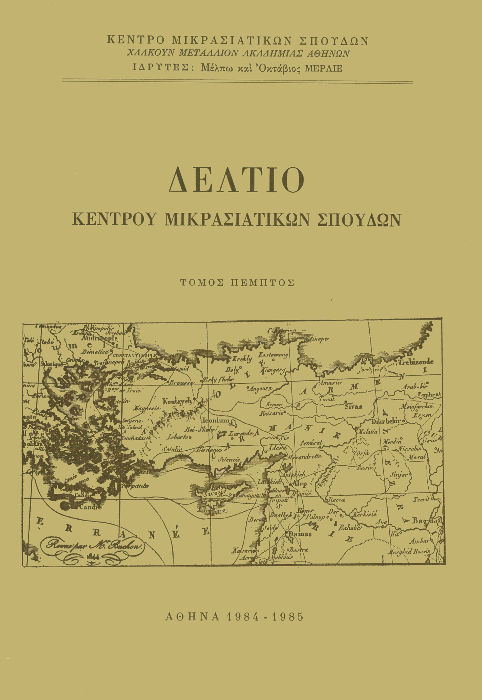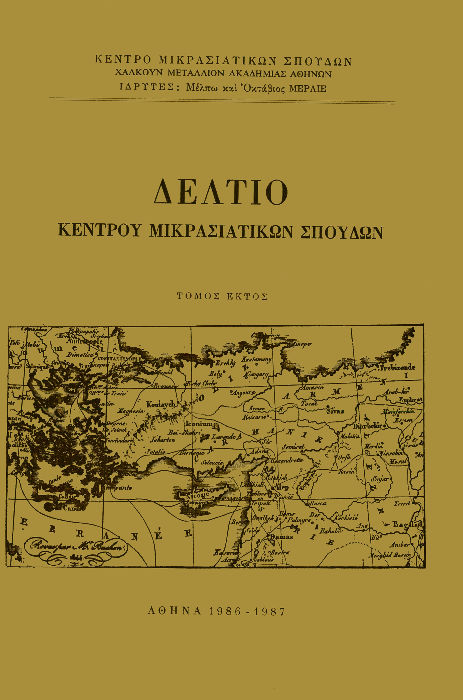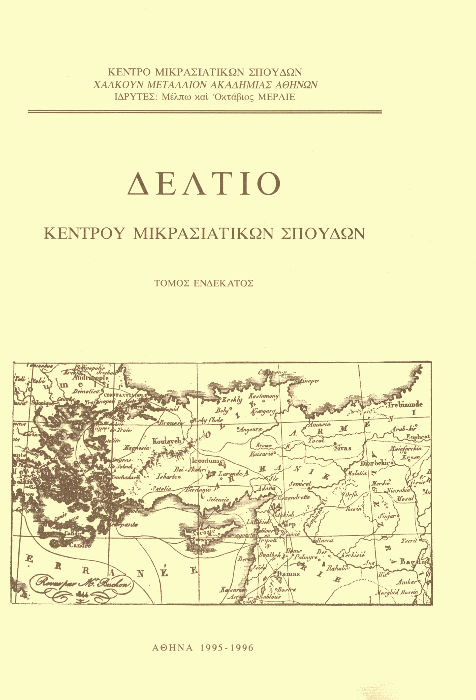Συμβολή στην ερμηνεία των μικρασιατικών στοιχείων της τέχνης του δέκατου αιώνα στη Μάνη
Περίληψη
Some features of the architecture and wallpainting of 10th century Byzantine
churches in Mani (SE. Peloponnese), can be interpreted as «oriental
». These features are the following: 1) the double apsidal simple
barrel-vaulted church of which the earliest dated monument is the church
of Saint Panteleimon at Boularioi (991/2); 2) the masonry templon with
arch opening. The above two features are found earlier in Cappadocia; 3)
the large open porch in front of the west façade of the church of Asomatos
above Ritta (10th century). This type of porch has only earlier parallel
in Georgia (c. 600); 4) the dome with ribs which forms a cross of the
same church. This type of dome-ribs also occurs in Georgia and Cappadocia;
and 5) The stylistic and iconographie affinities between the wallpaintings
of the 10th century in Mani and Cappadocia.
These «oriental» features appear to have been imported into Mani from
the East by members of the monastic movement of the 10th century.
Many monks from Asia Minor were sent to Greece after the Byzantine
victory over the Arabs (961) to reintroduce Christianity. Among these
monks two became famous for their building activities, Saint Athanasios
the Athonite and Saint Nicon the Metanoite. The latter was particularly
active in the region of Laconia, where many tenth century buildings
can be connected with his missionary activity.
Λεπτομέρειες άρθρου
- Πώς να δημιουργήσετε Αναφορές
-
Γκιολές Ν. (1984). Συμβολή στην ερμηνεία των μικρασιατικών στοιχείων της τέχνης του δέκατου αιώνα στη Μάνη. Δελτίο Κέντρου Μικρασιατικών Σπουδών, 5, 71–93. https://doi.org/10.12681/deltiokms.207
- Τεύχος
- Τόμ. 5 (1984)
- Ενότητα
- Άρθρα

Αυτή η εργασία είναι αδειοδοτημένη υπό το CC Αναφορά Δημιουργού – Μη Εμπορική Χρήση – Παρόμοια Διανομή 4.0.
Οι συγγραφείς των άρθρων που δημοσιεύονται στο Δελτίο διατηρούν τα δικαιώματα πνευματικής ιδιοκτησίας επί των άρθρων τους, δίνοντας στο περιοδικό το δικαίωμα της πρώτης δημοσίευσης. Άρθρα που δημοσιεύονται στο Δελτίο διατίθενται με άδεια Creative Commons 4.0 και σύμφωνα με την άδεια μπορούν να χρησιμοποιούνται ελεύθερα, με αναφορά στο/στη συγγραφέα και στην πρώτη δημοσίευση για μη κερδοσκοπικούς σκοπούς και με δικαίωμα τροποποίησης μόνον με παρόμοια διανομή (αν αναμείξετε, τροποποιήσετε, ή δημιουργήσετε πάνω στο υλικό, πρέπει να διανείμετε τις δικές σας συνεισφορές υπό την ίδια άδεια όπως και το πρωτότυπο).




